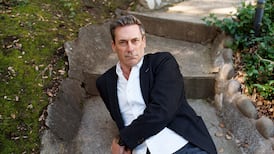It remains an oddity that two of the most successful US westerns ever emerged in a year when the genre looked to be dead in its boots. Sam Peckinpah's The Wild Bunch and George Roy Hill's Butch Cassidy and the Sundance Kid, released 50 years ago, were, perhaps, both negotiating farewells to a form that had buoyed up Hollywood since its creation.
The Wild Bunch offered a violent elegy to the familiar conventions. Butch Cassidy and the Sundance Kid managed to stay vibrant by not really being a western at all. Yes, the film was set in the 1890s and gestured towards two real outlaws who had made only occasional appearances in movies.
But Robert Redford and Paul Newman – the latter a star, the former about to become one – played it with a buddy-buddy suavity that belonged to all periods and none. The characters frolicked to Burt Bacharach's Raindrops Keep Fallin' on My Head. Katharine Ross, fresh of The Graduate, didn't stint on the Carnaby Street eyeshadow.
Four years later, Newman and Redford reunited for Hill’s The Sting, set in the 1930s, and did so little to tweak their personae you could be forgiven for thinking Butch and Sundance, now con artists, were looking good in their 70s..
There is no more patronising critical construction than “X for people who don’t like X,” but Butch Cassidy and the Sundance Kid is definitely a western for people who don’t like westerns. The conventions of the frontier are an irrelevance. The film is about little else but the relationship between its two stars. And it’s funny enough to be called a comedy.
The finesse worked. Butch Cassidy became the highest grossing film of the year in the US during 1969. Quite an achievement when the genre was supposedly on its last legs.
George Roy Hill may have been the director, but, in the succeeding decades, most credit has gone the way of screenwriter William Goldman. The author of Adventures in the Screen Trade, an essential Hollywood memoir, first came across the story in the late 1950s, but he couldn't interest any of the studios.
Goldman was attracted by the afterlife the outlaws had in Bolivia. "They ran to South America and lived there for eight years and that was what thrilled me: they had a second act. They were more legendary in South America than they had been in the old West," he said.
The studios initially reacted against the notion of heroes who fled the action. Goldman later reorganised the script and found himself in a bidding war, ending up with a record $400,000 (no small sum now for a screenplay). Steve McQueen and Warren Beatty turned it down: the former because he didn't get on with Newman, the latter because he thought the story too close to Bonnie and Clyde. Even after Redford and Newman came together the creative team was nervous. Butch Cassidy didn't play like any recent hit movie.
“We were in dangerous territory - because whenever you mix genres in a movie that’s where you end up,” Goldman wrote in Which Lie Did I Tell?: More Adventures in The Screen Trade. “I remember George Hill calling me in despair the day after the first Butch Cassidy sneak.”
Hill wasn’t concerned that the audience hadn’t like it. They’d loved it. His worry was that they found it too funny.
“George was convinced the balance had to be right, because if it was too funny the shootout at the end wouldn’t be moving,” Goldman continued. Hill actually went back to the film and cut out some of the jokes. The box office returns suggest he got the balance right.
The first reviews did not, however, bode well. Goldman believed that the big city critics were bristling at the huge fee he had received. “For them the title of the movie really turned out to be this: Butch Cassidy and the Sundance Kid: $400,000” he later quipped. Having sat through an unamused New York preview, he felt certain the film was set to be flop. Out there in America, however, the notices were largely ecstatic. Audiences went bananas.
In his excellent book Scenes from a Revolution, Mark Harris makes the case that the Oscars held in 1968 – the year of Bonnie and Clyde and The Graduate – marked the industry's reluctant shift towards what would become the "New Hollywood": Coppola, Scorsese, Friedkin and all that. He was not wrong.
But throughout those years, more conventional pictures scored big totals and competed for awards. Midnight Cowboy, an archetypal New Hollywood film and a very different sort of cowboy flick, ended up beating Butch Cassidy to best picture, but the creaky costume picture Anne of the Thousand Days and the overblown musical Hello, Dolly! were also in the running.
Like In the Heat of the Night in 1968, Butch Cassidy represented middle ground: a clever, hip film that entertained all ages without scaring any of the friskier horses.
As the 1970s crept on, Newman and Redford continued to entertain both fans of the new, sharper cinema and those who felt the world had gone to pot. Escapism has always been a key component in studio movies and there has rarely been more to escape than in the high years of the Vietnam War.
Midnight Cowboy addressed urban decay and the coming sexual revolutions. Butch Cassidy and the Sundance Kid managed to deliver the slickest entertainment without really “addressing” anything bar the attention span of its audiences. Goldman was more concerned with sharp set-pieces and Butch Cassidy abounded in such things. The fight in the Hole in the Wall. Frolicking on a bicycle to Raindrops Keep Fallin’ on My Head. The famous leap into the ravine.
“If you were in movie theatres back in those days, it was not hard to tell the scene worked,” Goldman said of that last sequence. “Audiences loved the guys so much now they would follow them anywhere.”
Audiences loved them so much they returned for a second and third time. The Academy put four statuettes its way: for score, song, cinematography and Goldman’s script.
No revival of the western followed the successes of The Wild Bunch and Butch Cassidy. Audiences perhaps recognised that the Peckinpah film led nowhere but oblivion. Many of them walked out of Hill’s picture happy that its western credentials were so easy to ignore.
But the picture did have influence. For another decade the smart-ass, buddy-buddy dynamic became an unavoidable staple of TV and film. The most obvious successor was the television series – a shameless rip-off, really – Alias Smith and Jones. The essential components were also there in the later cop show Starsky and Hutch: a near-homoerotic mutual reliance, in which the quarrelling is as binding as the back-slapping.
Oh, and there is, of course, one other legacy. Redford leant his character’s name to the Sundance Film Festival. It initially seemed like an unusual match - an indie event named for a colossal blockbuster - but that is, these days, one of the few places you might actually see a zippy comedy western. Elsewhere, it’s Marvel as far as the eye cam see.




















